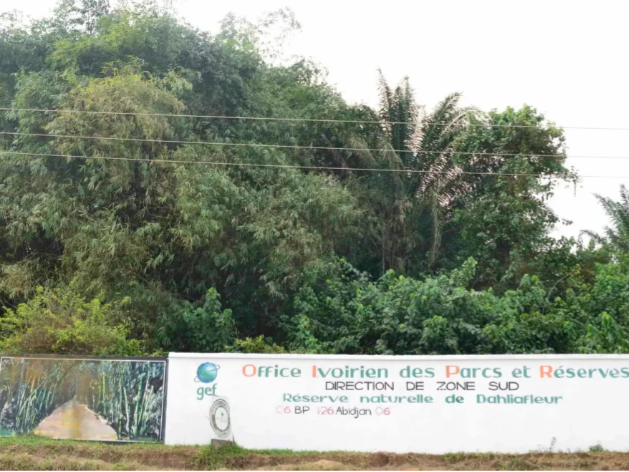
Italo Barbeta
Ministry of Environment and Water and Forests
Ivorian Office of Parks and Reserves (OIPR)
In the 1960s, Italian botanist Italo Barbeta started conducting botanical studies in an area that was later to become the Dahlia Fleur Reserve. The Ivorian government officially allocated 200 hectares of this land to Barbeta in 1994 for his flower grafting experiments. He constructed a residence and laboratory, and introduced the dahlia flower - his preferred species - in 2000. Following the passing of Barbeta in 2001, the Ivorian government, through decree No. 2004-566 of October 2004, returned 176 hectares of the land to state ownership, designating it as a public utility. In 2007, the Ministry of Environment and Water and Forests, in recognition of rising pressure from urbanisation resulting in pollution, heat stress and loss of natural spaces, designated the Dahlia Fleur Reserve as a public utility domain. In 2013, the Dahlia Fleur Reserve was granted the official status of a partial nature reserve of flora, with a final area of 148 hectares. The reserve is currently managed by the Ivorian Office of Parks and Reserves (OIPR).
The Ivorian Ministry of Environment and Water and Forests designated the Dahlia Fleur Reserve (DFR) as a Nature Reserve and public utility domain. Responsible for the management of the DFR, the OIPR adopted an integrated management approach that integrates scientific knowledge with Indigenous and local knowledge. The OIPR established a local management committee made of reserve managers and stakeholders, including traditional authorities and local communities. The committee enables Indigenous/local people to share their knowledge and engage managers in formulating informed management strategies. The reserve's management promotes beekeeping among local communities and implements sustainable fishing practices informed by local knowledge. The OIPR promotes ecotourism activities such as forest camping, cycling, hiking, walking, and picnics for foreign and domestic tourists, and the reserve has a fixed maximum limit of 200 visitors per day to ensure sustainability. It also engages community members in monitoring illegal activities in the reserve, charging visitor fees to support this and other conservation efforts.
The reserve helps local communities combat heat stress through its role in improving air quality and providing shaded green space. Local people who engage in monitoring the reserve, sustainable fishing and alternative livelihood activities such as beekeeping have gained employment which provides them with vital income streams. In 2021, 3,000 litres of honey were produced, generating an income of 3 million CFA francs (approximately 4,570 Euros). Indigenous and local knowledge is valorised and incorporated in the management of the reserve. The local population access the park at a reduced fee, and benefit from ecotourism activities such as forest camping, cycling, hiking, walking and picnics which enhance their wellbeing.
The 148 hectares of the Dahlia Fleur Reserve’s varied ecosystems (artificial forest, dense forest, mangrove, and horticultural areas) help reduce urban heat and flood impacts and improve air quality. The reserve conserves approximately 135 species, including 15 species of mammals, 69 species of birds, and numerous insects. Sustainable fishing practices being implemented near the Ebrié lagoon, informed by Indigenous and local knowledge, preserve fish populations and aquatic biodiversity. These include only catching mature fish, and limiting fishing to specific periods of the year.
The integration of Indigenous and local knowledge and engagement of local communities in the management of the Dahlia Fleur Reserve fosters a sense of ownership and responsibility, which contributes to its effective and sustainable conservation.
Due to changes in state preferences, the extent of the Dahlia Fleur Reserve reduced from 200 hectares in 1994 to 148 hectares in 2013. The management of the reserve was entrusted to the OIPR following the passing of Barbeta in 2001.
Urbanisation and land use change threaten the park. For example, a state proposed development of 1,000 hotel rooms, a shopping gallery and a wildlife park on the Dahlia Fleur Reserve site is likely to encroach on its biodiversity areas.